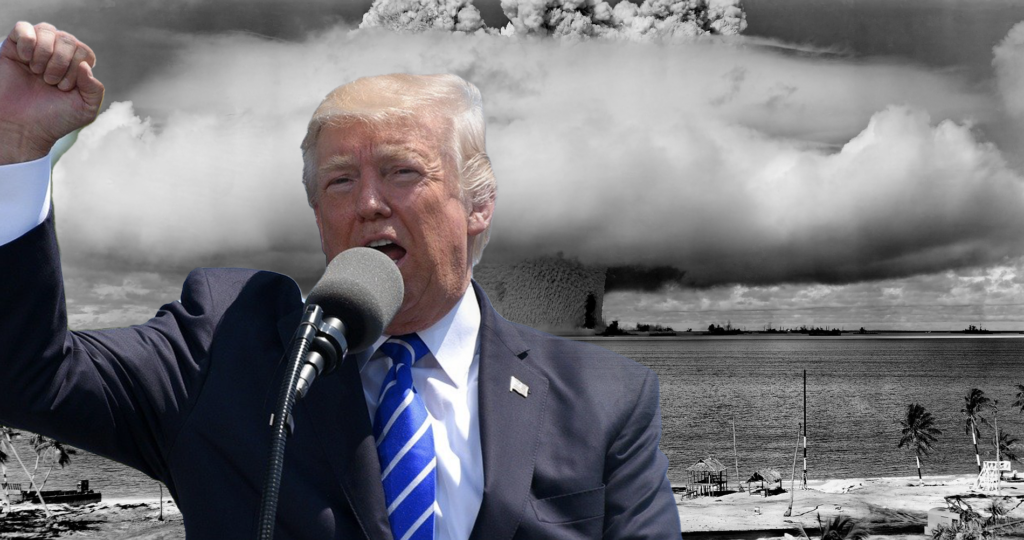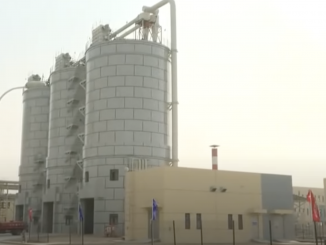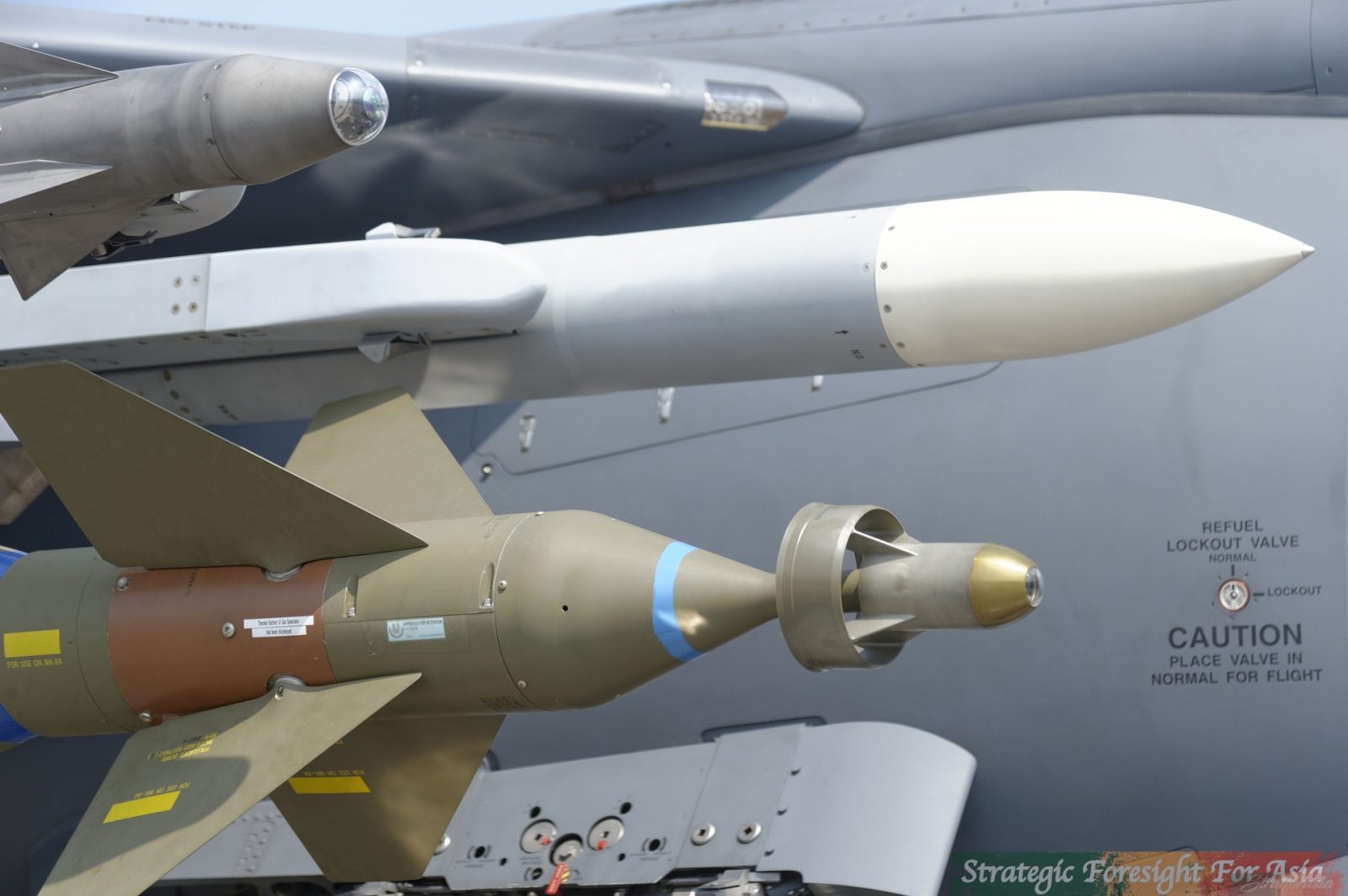
On 22 May, Washington Post reported that the U.S. was considering resumption of nuclear testing, after having had its last test in 1992. The stimulus can be traced back to a Compliance Report issued on 15 April by the US State Department’s Bureau of Arms Control, Verification and Compliance, that raises concerns over Russian and Chinese commitment to non-testing of nuclear weapons. The U.S. attempt to rope-in China and Russia into a trilateral arms control arrangement is seen as another driving factor. An understanding of various factors like U.S. withdrawal of its signatures, resumption of nuclear testing, possible benefits, and likely pitfalls need to be analysed at different levels.
With 1149 nuclear tests under the belt – highest within all nuclear weapon possessor states – U.S. has tested weapons for various purposes including 891 weapons related tests, 88 safety experiments, and another hundred to study weapons effects. It is difficult to assume that U.S. consideration is prompted by any operational requirements, like testing for new delivery systems. This becomes even more pronounced given the fact that a 2012 U.S. National Academy of Sciences (NAS) report on the Comprehensive Nuclear-Test-Ban Treaty (CTBT) noted that there have been significant advancements to the technical issues related to the CTBT, and that the United States no longer needed – and would not benefit from – nuclear explosive testing. Furthermore, the U.S. National Nuclear Security Administration had certified only last year “the safety, security, and effectiveness of the U.S. nuclear weapons stockpile to the President without the use of nuclear explosive testing”, thereby negating the need for resumption of nuclear testing on technical grounds.
The 2002 NAS Report also cites substantial advances in U.S. national monitoring and the International Monitoring System (IMS) capabilities across all of the key verification technologies deployed worldwide to detect and deter nuclear tests, thereby negating the argument that treaty restrictions limit U.S. ability to verify Russian or Chinese compliance. As a matter of fact, these objectives may be better served by ratification of the treaty rather than withdrawal.
Trump Administration officials feel that “a nuclear test could help pressure Chinese into joining a trilateral agreement with the United States and Russia.” However, it will depend on whether the U.S. only withdraws its signature or resumes nuclear testing. Like the U.S., China has also not ratified the CTBT. U.S. withdrawal may prompt an unease within China and Russia but not to the extent that they resume nuclear testing before the U.S. does. U.S. withdrawal can potentially provoke Chinese into similar action while forcing Russia to look at an exit-mechanism in a treaty that is yet to enter into force. It is generally understood that a treaty only becomes binding after it has been ratified. However, towards the end of Obama Administration’s withdrawal, UN Security Council passed resolution 2310 (tabled by the U.S.) which recognizes that “a nuclear-weapon test explosion or any other nuclear explosion would defeat the object and purpose of the CTBT.” It is argued that by endorsing this language, the resolution affirmed the view of P-5 that even before the treaty enters into force, all 183 CTBT signatories have an existing obligation not to conduct nuclear test explosions, therefore requiring the U.S. to actually withdraw its signature before it can move on with nuclear testing even though the treaty has not entered into force.
Another aspect that the U.S. will have to consider would be the willingness of Russia and China to stand by the CTBT’s non-proliferation objectives as the U.S. absolves itself of such responsibilities. They will also have to increase their financial contributions to ensure functioning of CTBTO as the biggest financial contributor withdraws. The U.S. alone contributed 22.47% (or USD 128 million) of CTBTO’s funding for 2016 and separately extended financial contributions to various projects. Smooth continuation of CTBTO’s operations would also ensure that Russia and China have the ability to detect any possible U.S. tests through the organization’s elaborate IMS.
If the China and Russia follow U.S. in withdrawal, the treaty is likely to collapse in the absence of these actors. This will practically undo efforts of over six decades that started with PTBT in 1962 to limit and later foreclose the option of explosive nuclear testing.
In the worst-case scenario, where Russia and China follow U.S. in the resumption of nuclear testing, a domino effect cannot be ruled out. There are already voices in India viewing this as an opportunity to resume nuclear testing given questionable results from the last round of testing in 1998. Such writings become all the more significant as they come from influential experts like Manoj Joshi, and from a platform like Observer Research Foundation, which is often working in close collaboration with the Indian Ministry of External Affairs. Likewise, the former Indian Ambassador, Rakesh Sood, sees the possibility of a renewed arms race which could well spill out to South Asia.
For India, resumption of nuclear testing may be an operational necessity given the introduction of new systems like SLBMs, cruise missiles, ICBMs, the smaller SRBMs, and prospective MIRV capable missiles. Today’s Indian nuclear forces significantly differ from what India had in 1998—when it last tested its nuclear weapons—and 2003—when it declared its nuclear doctrine. Since 2003, India has introduced ten new nuclear capable missile systems. These systems vary in their ranges (150-5000+ kms), delivery platforms (air, land, and sea), and type (cruise and ballistic missiles). The new smaller systems (like Prahaar, Brahmos, and K-4) and prospective missiles capable of carrying Multiple Independently Targetable Reentry Vehicles (MIRVs), would require significant miniaturization of warheads and there is no verification if India has achieved such a feat. On the other hand, longer range missiles, such as the Agni-V, will require significantly higher yield warheads. An ICBM with a 25 kilotons yield warhead would be a mismatch, given the circular error probability which increases with range and can be compensated with higher yield warheads. This situation makes nuclear testing somewhat an operational necessity for India. In case of Pakistan, the newly developed systems have a far lesser range obviating the need for higher yield weapons. The other aspect, of miniaturization, is believed to have been accomplished for the SRBMs and cruise missiles.
India’s strategic decision-making has been increasingly influenced by domestic politics. The Indian decision of nuclear testing in 1998 was driven largely by domestic politics rather than regional or international security situation prevailing in that particular time frame. Bharatiya Janata Party (BJP) had announced in its election manifesto that it would test nuclear weapons and it eventually did in 1998. Similarly, in its 2014 election manifesto, BJP criticized Congress for its approach on nuclear issues claiming that “the strategic gains acquired by India during the Atal Bihari Vajpayee regime on the nuclear programme have been frittered away by the Congress.”
The recent escalation with Pakistan following the Pulwama attacks was also used for political mileage. Indian Defence Minister called for Modi’s re-election on 25th Feb (a day before the alleged Indian Air Force surgical strikes) asserting that the country will face a 50 year setback if he was not re-elected. The more recent testing of Anti-Satellite (ASAT) weapons is also seen as an extension of similar trends. Former Indian Minister (Shashi Tharoor) tweeted that his government had chosen not to brandish this capability but Modi possibly decided to use this capability for domestic political gains. Therefore, Indian resumption of nuclear testing could well become a part of domestic political agenda in the times to come – especially given the fact that some senior Indian scientists have claimed failure of certain weapon designs. In recent times, India has faced a conventional failure against Pakistan in 2019 and with China in the form of border disputes. Nuclear testing can have potential domestic and regional dividends for India. Former U.S. officials have also acknowledged that “India intends to build thermonuclear weapons as part of its strategic deterrent against China.” This impression that such a weapon is only required as a compulsion against China, is likely to encourage Indian resumption of testing.
While it appears that Indian governments (especially BJP-led) use strategic decisions for domestic political gains, such a decision will have to take into account the international repercussions. India had declared a unilateral moratorium on nuclear testing in its nuclear doctrines issued in 1999 and later in 2003. From 2005 onward, under the Indo-U.S. civil nuclear cooperation agreement, India has made implicit commitments to uphold its unilateral moratorium but has evaded providing any legal commitments to this effect. It has also entered several other civil nuclear cooperation agreements following the 2008 Nuclear Suppliers Group (NSG) waiver, but explicit legal commitments to a moratorium on nuclear testing have been missing.
Reportedly, there was no clause to restrict Indian nuclear testing in the Indo-Japan civil nuclear cooperation agreement. Likewise, there was no such provision in the Indo-Australia nuclear deal. However, the Australian competent authority on treaties ruled that nuclear testing would constitute a violation of the agreement. While states like the U.S., Japan, and Australia claim that Indian nuclear testing would constitute violation of the agreements; the then Indian PM, Manmohan Singh, had asserted that the Indo-U.S. civil nuclear cooperation did not restrict nuclear testing. Similarly, following the Indo-Japan civil nuclear cooperation agreement, Indian officials have asserted that India did not take any legally binding obligations on nuclear testing issue and that the reference was to cater for Japanese sensitivities.
Such a state of play can be traced back to the days of finalization of Indo-U.S. civil nuclear cooperation in 2005 and the subsequent NSG waiver in 2008. Two days before the grant of NSG waiver, Indian External Affairs Minister, Pranab Mukherjee, had reiterated Indian commitment to a unilateral moratorium on nuclear testing – reportedly to allay the concerns of states opposing the grant of this waiver. Exactly three days after having secured the waiver, the Minister said, “[India] has the right to act [test]; others have the right to react.” These statements are indicative of how India has essentially used international sensitivities to gain favourable outcomes from multilateral fora. It is logical to assume that India continues to follow this line in the absence of any legally binding clauses in these agreements stating so.
In the absence of Indian testing, the only other player in South Asia does not appear to face any pressures to resume nuclear testing. Like India, Pakistan has not signed the CTBT but has committed to not be the first to resume nuclear testing in South Asia. This policy was announced by Foreign Minister Abdul Sattar in 1999 and has since been reiterated in 2005 and 2016. Pakistan’s India-centric approach further lends viability to this policy-position. Pakistan’s proposal of a bilateral agreement with India, forbidding nuclear testing, indicates its commitment to this policy as long as India refrains. This two-decade old policy has remained unchanged under one military and four civilian governments.
The absence of such pressures or compulsions allow Pakistan to wait for the moment when India decides to resume nuclear testing. On the Indian side, “national pride and prestige have been a long-term factor in contributing to India’s strategic choices.” Such compulsions further increase, given the disputed outcomes of India’s thermonuclear tests. There may be similar considerations for the two South Asian nuclear weapon states; however, the key to nuclear non-testing continues to lie in New Delhi.
![]()




Be the first to comment